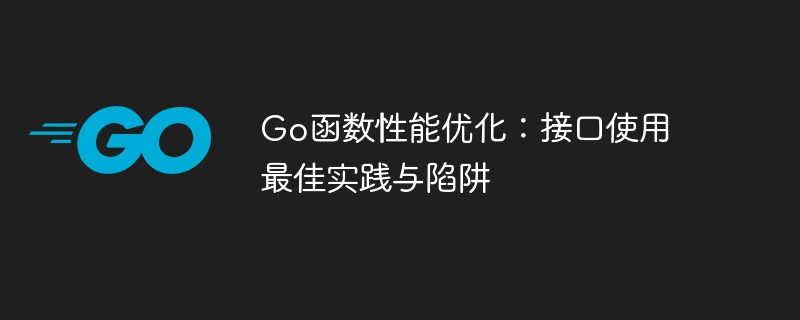
Go function performance optimization: interface best practices and pitfalls Use empty interfaces (interface{}) with caution and give priority to concrete type interfaces to improve performance. Extend interface capabilities through aggregation and avoid hiding interfaces to maintain performance. Optimize method signatures to avoid variable-length parameters and empty interfaces to reduce overhead. Use type assertions sparingly and use if-else statements or switch statements for type checking to reduce runtime costs. Avoid pointer receivers, multiple interface conversions, and interface allocation traps to reduce indirect calls, performance overhead, and memory leaks.

Go function performance optimization: best practices and pitfalls in interface usage
Interface, as a powerful abstraction mechanism in Go, can Greatly improve code scalability and reusability. However, improper use can be counterproductive when pursuing performance optimization. This article will delve into the best practices and pitfalls of interfaces and illustrate them with practical examples.
Best Practice
Traps
Practical case
Suppose we have a Dog type and need to implement Animal and SoundEmitter Two interfaces. We use empty interface:
type Dog struct {
name string
}
func (d Dog) Speak() {
fmt.Println("Woof!")
}
func (d Dog) GetName() interface{} { // 空接口
return d.name
} Now, let us use aggregation to aggregate the NameGetter interface to Dog Type:
type NameGetter interface {
GetName() string
}
type Dog struct {
name string
}
func (d Dog) Speak() {
fmt.Println("Woof!")
}
func (d Dog) GetName() string { // 具体类型接口
return d.name
} By aggregation, compile The processor can be optimized for a specific implementation of the GetName method, thereby improving performance.
Conclusion
Following these best practices and avoiding pitfalls can significantly improve the performance of your Go functions. By judicious use of interfaces, developers can take maximum advantage of Go's abstraction and dynamic type system while maintaining code efficiency.
The above is the detailed content of Go function performance optimization: best practices and pitfalls in interface usage. For more information, please follow other related articles on the PHP Chinese website!
 HTML space setting method
HTML space setting method
 IIS unexpected error 0x8ffe2740 solution
IIS unexpected error 0x8ffe2740 solution
 Implementation method of js barrage function
Implementation method of js barrage function
 A complete list of linux server operation and maintenance commands
A complete list of linux server operation and maintenance commands
 C language random function usage
C language random function usage
 What is the mobile service password?
What is the mobile service password?
 How to lock screen on oppo11
How to lock screen on oppo11
 How to adjust computer screen brightness
How to adjust computer screen brightness